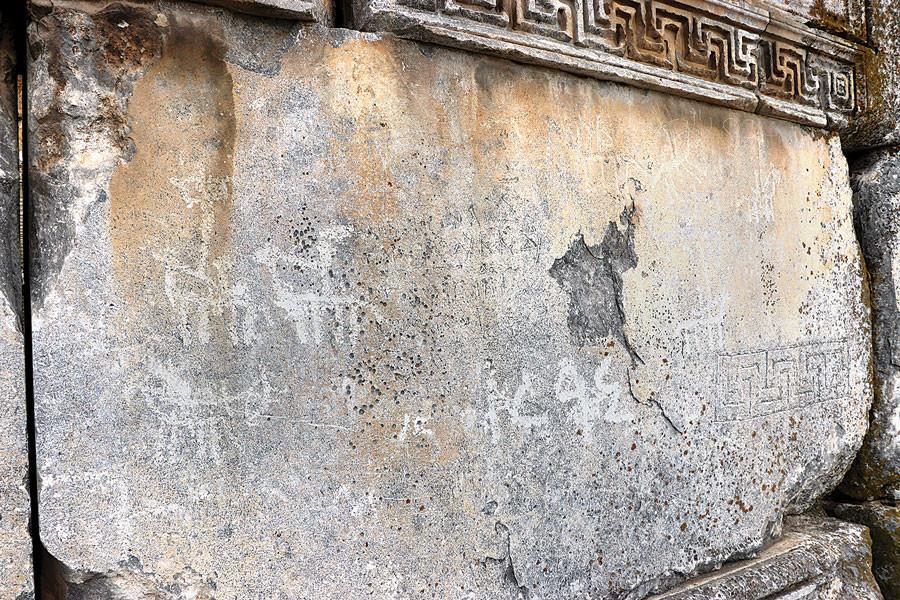
Hundreds of figures believed to have been drawn by Çavdar Turks on the walls of the Temple of Zeus in the ancient city of Aizanoi — dubbed as the “second Ephesus” — have been discovered in excavations. The findings are set to be gathered and documented in a book.
Aizanoi, located in the western province of Kütahya’s Çavdarhisar district and on the UNESCO Tentative List of World Heritage, is home to the best-protected temple in Anatolia: The Temple of Zeus. It hosts an ancient theater with a capacity of 15,000 people, a stadium with a capacity of 13,000 people, two baths, the world’s first stock exchange building, a column-lined street, five bridges, two agoras, necropolises, waterways and several structures, which have all been unearthed during archaeological excavations since 1926.

Speaking to state-run Anadolu Agency, the head of the excavations in the ancient city, Elif Özer, said that within the scope of the works carried out by Pamukkale University archaeology department, they had uncovered findings related to the Çavdar Turks and Byzantines in the Temple of Zeus a few years ago.
According to evidence, she said, Çavdar Turks and Byzantines had lived in Aizanoi after the ancient Roman era.
“We worked in the southern part of the temple to find information about life in the 12th and 13th centuries. According to our findings, we learned that Çavdar Turks lived in this region during that time. The art historians on our team worked on the Çavdar figures on the walls of the temple. There are some 400 figures on the temple. Each of these figures was examined and their inventory was taken. We found out that there were five or six different groups here, for example, warriors and their leaders. These figures were drawn bigger. There are also smaller figures, which we think depict the enemies. We have cavalry and hunter figures, too. Inside the temple, there are mostly figures of festivities. We see lute players and lovers there,” Özer said.
She said a book about the works on Çavdar Turks would be published in the coming days.
Byzantines lived in Aizanoi too
Özer, a professor, said they obtained findings indicating the Byzantines had lived in the ancient city, too.
“The Temple of Zeus was used as a church by the Byzantines in the monotheistic period. This is why there are hundreds of cross figures on all of the walls. They were made with sharp tools. We also saw a prayer for the mother of Jesus Christ, Virgin Mary. It was made when the temple was a church,” she added.
Özer said the altar, which was built at the entrance of the temple for Zeus the god, was turned into a bakery in the Byzantine era where bread was cooked.
“There is a Roman-era altar for Zeus at the entrance of the temple. We found that this altar was used as a bakery in the early ancient ages. We found a bread seal here, which shows that cross seals were impressed on breads and they were given to people,” Özer said.